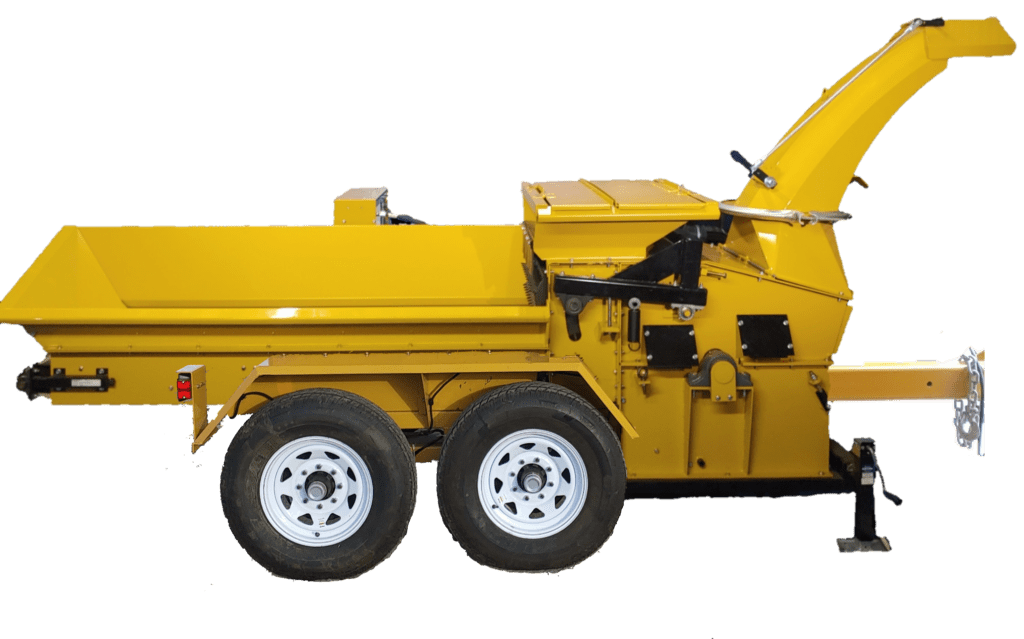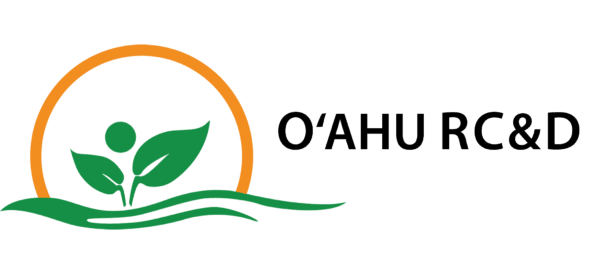Applying Biodiversity in a Cacao Orchard on Gravel Quarry
Kulike Farms
Operation Background:
Description of Operation: 400 cacao trees
Soil Order & Series: Andisol
Precipitation: ~200”
Standing under one of the cacao trees on Kulike Farmʻs 20 acres in Hakalau on the Hamakua Coast of Hawaiʻi Island, it’s hard to imagine that this same land was an abandoned gravel quarry in 2004. Rachel Laderman and Dan Kelly began stewarding the land full-time in 2010. After intensive land prep and mulch applications, their cacao orchard was installed in 2015. Part of this initial land-prep involved removing large albizia and other invasive trees. Although theyʻre on an Andisol soil, which typically is not prone to compaction, the past management and land use resulted in compaction layers and drainage issues. Managing water and addressing erosion resource concerns were also major challenges that required the installation of culverts, ditches and other systems to filter, convey and retain surface waters and to improve infiltration rates.
Diversity is the Name of the Game!
The regenerative agriculture principle of maximizing diversity has successfully guided the hard work to transform the gravel yard into productive ʻāina. In addition to their orchard, they grow a diversity of cacao varieties in an agroforestry setting. Along with perennial vegetables and other tree crops, they integrate chickens and rabbits. Crops they incorporate include cassava, yam vines, a variety of spinaches, katuk, chaya, and kalo. They pride themselves on growing a diversity of unique and functional species, including [add some of the unique varieties of mulberry, curry, basil etc.]. In addition to above ground diversity, they intentionally incorporate plants with diverse root systems, including varieties with large tap roots to draw essential nutrients from the subsoil to root systems which feed and mine minerals from the topsoil. The practice of planting a diversity of plant species to increase nutrient cycling and availability is also evident by the large number of nitrogen-fixing trees, shrubs and ground cover species youʻll discover as you visit their farm. In their cacao orchard, they’ve incorporated Ice cream bean (Inga edulis), basul (Erythrina edulis) Pigeon Pea (Cajanus cajan) and Hawaiian Sumac (Rhus sandwicensis or Naleau or Neneleau) as nitrogen fixing trees/shrubs and desmodium and perennial peanut as preferred varieties of nitrogen-fixing ground covers. Black tea and coffee have also been planted as understory plants. Aware that their Andisol soils are prone to Phosphorus (P)-Fixation, they intentionally plant crops that can fix phosphorus and make it available in a form that plants can use, such as bananas and comfrey, lemon grass, and hibiscus.

Like most farmers, Rachel and Dan are resourceful. Dan is a do-it-yourself mechanic, engineer, and builder. In 2019, to provide the much-needed resource of wood chips for the farm, he purchased an old used Sundance Hammer Mill and fixed it himself,spending $15,000 on hoses, valves, bearings, and hammers.
The couple attribute using a large diversity of mulch and applying mulch regularly to keep up with decomposition rates as one of their most important practices which have helped them build soil volume, improve soil fertility and tilth. Using a log splitter has also allowed them to utilize larger log material to be run through the chipper. Although they have secured an on-farm chipper, they arenʻt certain this practice is cost effective since it is labor intensive. On ʻchipping dayʻ they need a couple of extra farmhands to prep and chip the mulch. For raw material they use invasive trees, such as Albiza and Strawberry guava (Waiwi) as a source and also prunings from the farm. Theyʻve also sourced county mulch, which is chipped and made available to Hawaiʻi Island commercial farmers on specific days. Obtaining county mulch, although free, still entails the cost of the vehicle, fuel and the drive and loading time, not to mention the time to wait in line for the highly-prized County mulch resource.
Additional practices include:
In addition to chipping a diversity of trees onsite to support their mulching practice, the farm also makes their own fertilizers and soil amendments. As part of this practice, they routinely submit soil samples to identify any pH or nutrient imbalances. After identifying the nutrients that need to be added to the soil, they determine which products they can make or source. They add to their knowledge by asking farmer friends, and looking for online information including university publications, such as Enhancing Soil Function and Plant Health with Locally Available Resources and CTAHR extension publications, such as Natural Farming, The Development of Microorganisms Using Korean Natural Farming Methods.
Creating closed-loop systems and using local inputs are guiding values for the farmers. The couple has been able to successfully produce their own ponding system to propagate
Azolla, which they use as a fertilizer and chicken feed. They also have their chickens within a food forest planted with multiple food plants, from berry bushes and edible hibiscus to bananas and sapotes. They also have two optional fenced-off, gated areas that they can let the chickens into, one that is grassy and the other a vegetable garden (when it is fallow). They ferment their Scratch and Peck organic feed, which expands the bulk size of the feed and saves them money, while also improving the nutrient availability, making it easier for the chickens to digest the food and increasing the decomposition rate of their litter. Theyʻve tried many practices to provide chickens with local sources of protein, such as cultivating Black Soldier Flies and compost tables. Compost tables are their own design: coverable boxes raised on legs with screen bottoms, to feed the chickens both compost and the organisms such as black soldier fly grubs and worms that break down compost and drop out of the screen-bottomed tables. To keep soldier fly and compost bins going they have picked up fish waste and organic waste from smoothie and health food restaurants. These methods all proved too difficult to consistently sustain, so at this time they just supplement the fermented feed with household compost to the chickens, along with coconuts, and azolla.
They also use Korean Natural Practices, including a deep litter system for their chicken coop and have made fermented Amino Acids (FAA), along with spirulina, to inoculate their biochar as a soil carbon amendment. In addition to FAA, theyʻve also experimented with making and applying KNF Lactic Acid Bacteria (LAB) as a source of plant-available calcium.

In addition to making on-farm products, they use wastestream products, such as algae byproducts from local fishponds and ʻpond-clean-outsʻ from aquaponics operations, including the Hilo Port and Energy Lab in Kona. Mushroom substrate is another soil amendment and mulch theyʻve sourced off-site and from other local farmers. They were able to source the substrate from Hamakua Mushrooms as a decomposed mulch/compost mix with Eucalyptus. Finding inputs to manage the naturally acidic pH of their Andisol soil, theyʻve trialed “Drill and Fill” using Spirulina (~12% N) mixed with granulated ag lime (as a source of lime), humic acid, and Azomite.
Theyʻve also used Spirulina in a top dressing fertilizer mix for their orchard.
Networking within their community has been essential to finding local inputs as part of their ultimate goal of a closed-loop fertility program.
Note: As part of Oʻahu Resource Conservation and Development Council’s Soil Health Training Cohort, we are proud to feature some of the innovative practices local farmers are using to regenerate and restore soil health and on-farm ecological services. To learn more about this initiative, please visit our website.
This material is based upon work supported by the U.S. Department of Agriculture, under agreement number NR2192510002C002. Any opinions, findings, conclusions, or recommendations expressed in this publication are those of the author(s) and do not necessarily reflect the views of the U.S. Department of Agriculture. In addition, any reference to specific brands or types of products or services does not constitute or imply an endorsement by the U.S. Department of Agriculture for those products or services.

